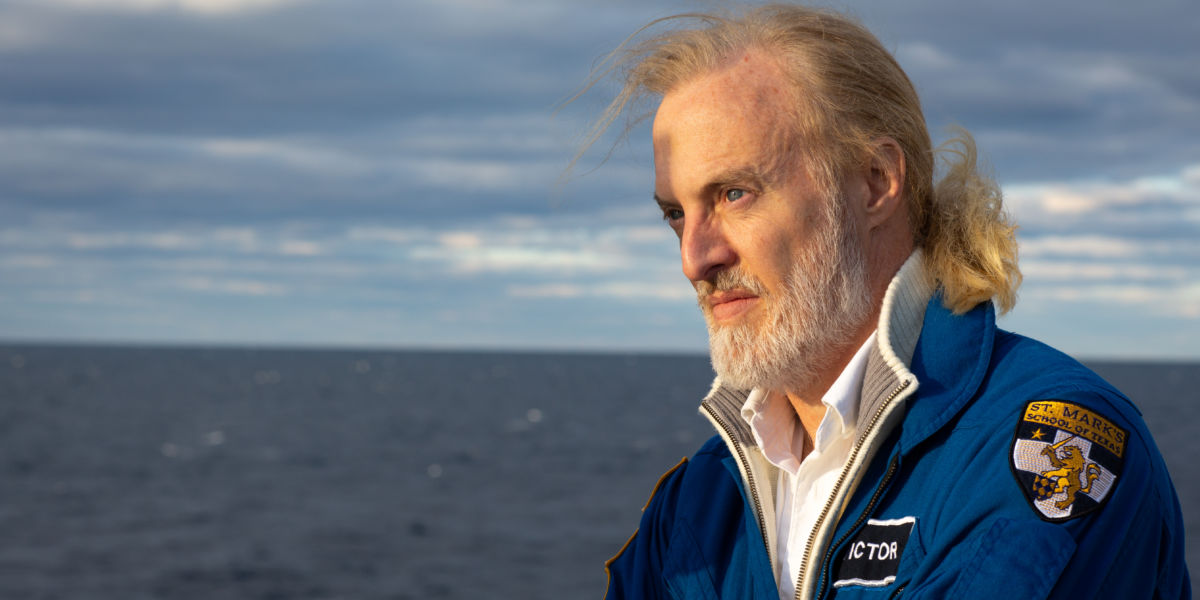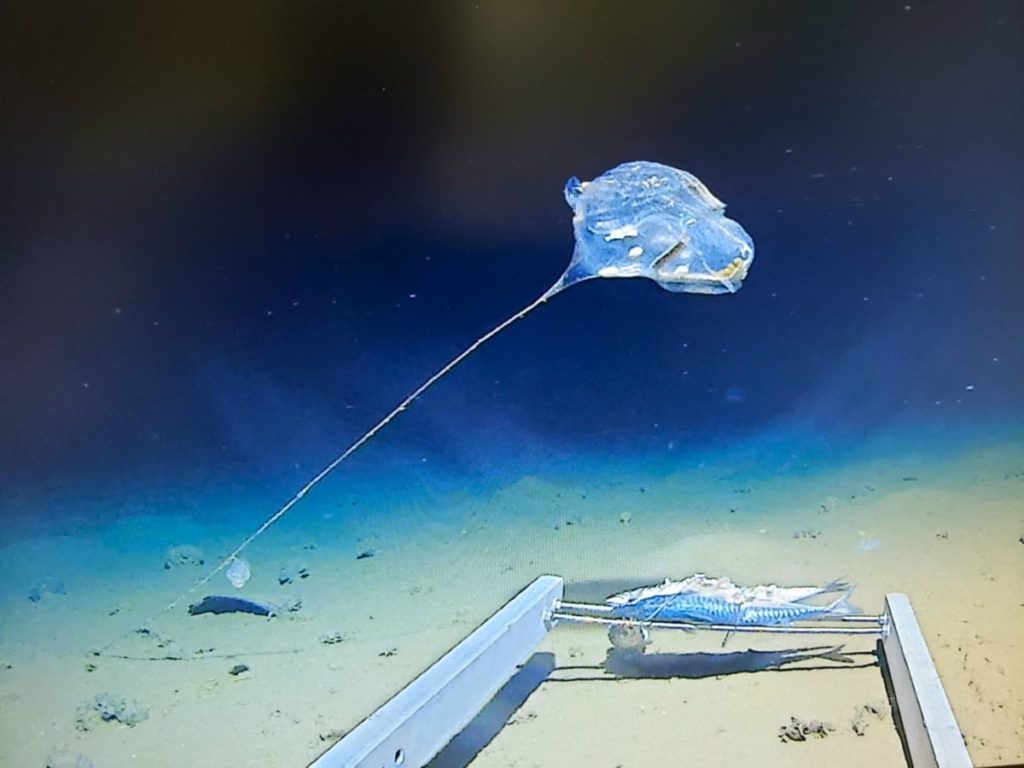
“It Can Get Done”—Meet the 1st Man to Pilot a Submersible to the Bottom of All 5 Oceans
The Five Deeps Expedition got underway just before Christmas 2018, when Victor Vescovo set the submersible down on the floor of the Atlantic Ocean at a depth of 27,480 feet.

We only recommend things we love. If you buy something through our site, we might earn a commission.

The deepest parts of our oceans remain the greatest mysteries of our planet. Oceanic trenches that plunge to intimidating depths of 36,000 feet, or nearly 7 miles beneath the waves, make for an unforgiving environment only a handful of human beings have dared venture into.
“It’s really a hard place to work,” NASA oceanographer Gene Feldman said in 2009. “In many ways, it’s easier to put a person into space than it is to send a person down to the bottom of the ocean. For one thing, the pressure exerted by the water above is enormous. It’s the equivalent of one person trying to support 50 jumbo jets.”
Crushing pressure and unfathomable darkness may make manned missions to our oceans’ floors unthinkable for most, but where there exists a slim chance of success there will inevitably be human ambition.
That’s where Victor Vescovo comes in. By mid-2014 the now-54-year-old explorer and retired naval officer had completed climbs of the highest mountain on all seven continents and skied both North and South Poles. Intrigued by the idea of not only reaching the greatest depth on the planet—the Challenger Deep—but becoming the first person to land a submersible vehicle on the floor of all five of the Earth’s oceans, Vescovo got to work.
Alongside Vescovo, a crew of scientists and engineers eventually put the finishing touches on a two-person titanium sub, called the “Limiting Factor,” that could withstand the pressure equivalent of 292 fueled and loaded 747 jets stacked on top of it.
By December 2018, the sub—and Victor—were ready to be put to the test. The Five Deeps Expedition officially got underway just before Christmas of that year, when Vescovo set the Limiting Factor down on the bottom of the Puerto Rico Trench at a depth of 27,480 feet.
Vescovo’s daring mission to tackle all five of the Earth’s oceanic floors, one that could have an array of future implications in the scientific community, was documented in the new book Expedition Deep Ocean: The First Descent to the Bottom of All Five Oceans, written by best-selling author Josh Young.
Vescovo and Young, who had unfettered access throughout the entirety of the mission, spoke to Sunset about the expedition and what this accomplishment, one that concluded with the historic fifth dive on August 24, 2019, could mean for future research.
Editor’s note: Answers have been edited for clarity.
VICTOR, HOW LONG WAS THIS PROJECT ON YOUR RADAR? WHAT DID THE DEVELOPMENTAL STAGES LOOK LIKE?
VV: The decision to construct a vessel included the designing and building, then getting a support ship. That was four and a half years before the time we finished in 2019.
So, around mid-2014 I was looking at potential exploration adventures. I had done Everest in 2010 and the two poles a couple years after that. So, I was just looking for something that was a combination of a really interesting adventure, but also something that had never been done from an exploration standpoint.
It took roughly two-and-a-half years to build the submarine and get it to a point where we might be able to do this thing.

Courtesy of Atlantic Productions
Josh said to me a couple of times that this was one of the more difficult assignments he’s ever had, because it wasn’t just looking at something that already happened—he was doing it in real time and we weren’t sure how this was going to play out. But I’m a strong believer in embedding a journalist and giving them access in order to get the first draft of history out. I believe in accuracy—the good, the bad, the ugly, and hopefully that’s what comes across in the book.
WHAT WAS IT THAT SET THIS EXPEDITION APART FROM THE ATTEMPTS OF PAST EXPLORERS?
VV: There have been three attempts to build and dive a vessel into the Challenger Deep. First there was the Trieste in 1960 and then about 50 years later another attempt led by James Cameron using second-generation technology with syntactic foam instead of hollow glass beads and a matrix of epoxy that doesn’t compress but stays buoyant.
But he also used the steel capsule, and because steel is so heavy, he could only have himself in the vessel and he was rather cramped in it. It’s pretty well documented that a lot of things broke down during the dive, so he only made that one dive. There was also a phase in submarines where carbon fiber was used. It’s cheap and strong, but it turns out it can’t handle repeated loading and unloading stresses like steel or titanium.
So, we came along with a third generation of deep-water technology, but we went with titanium. It’s a lot more expensive than steel, but was significantly down in price since Cameron’s dive. In the end, we were able to build a sphere—a bit larger than what Cameron had, but similar weight—that could hold two people. It was also commercially rated from the very beginning, which means it met certain safety standards. I even had the Prince of Monaco dive with me once, and the only reason he would agree to do that is because it’s commercially certified.
JOSH, WHERE IN THIS PROCESS DID YOU REALIZE THIS WASN’T SIMPLY GOING TO BE A DOCUMENTATION OF HISTORY, BUT A CAPTIVATING PERSONAL INTEREST STORY AS WELL?
JY: Right from the start there were interesting personalities involved. Obviously, Victor was the lead, but the group that built the submarine, the expedition leader, the film crew, the chief scientist, and this incredibly professional Scottish captain all lent so much to the story. I started to meet personalities that I saw could drive the narrative and I knew there was this amazing human story here.
Not much went right in terms of hitting deadlines, missing narrow weather windows, engineering timelines, certifications—there were so many hiccups. But I was able to watch this group overcome these challenges and do everything in their power to keep the expedition going.
This sort of thing had never been done before, so everything was an unknown. But it kept boiling down to seeing these people who are the best at what they do push through and come together as a team.

Courtesy of Caladan Oceanic
DID ANY OF THOSE HICCUPS EVER CAST DOUBT ON THE MISSION’S EVENTUAL SUCCESS?
VV: Fortunately, the most important elements like life support, submersing and raising the capsule, thrusters, communication systems—what I would call the core systems consistently demonstrated success to where it became obvious the Limiting Factor could do repeated dives.
The things we all agonized over were completely superfluous to the core mission. At the end, we did the five deeps. It worked.
JY: To Victor’s point, safety was never an issue during the 16 months of this expedition. I don’t think anybody even sprained an ankle, which is unbelievable considering the scale of the project.
Scheduling could be a major concern and we would run up against deadlines. In the polar regions, for example, there are such small weather windows when you’re actually able to dive the Arctic Ocean. I think that added a lot of pressure to perfect the sub to make sure it worked before the sailing halfway around the world and trying to dive the colder regions.
But when everyone was focused on what they had to do, they would just lock in. It was fascinating to watch because they’re just so good at what they do.
VV: In many ways, the adventure of the five deeps mirrors what life or even war can be like. People come together and they get the job done. It’s only when the job is done that you’re in some bar and all the personality conflicts come to life. (Laughs)
Human beings can get wrapped up in things that, in the end, just aren’t that important. But no matter the issues we encountered, I always knew in the back of my mind that we were making forward progress and defeating the enemy of chaos to achieve ambition.
WERE THERE ANY NERVE-WRACKING MOMENTS YOU ENCOUNTERED DURING THE DIVES OR LEADING UP TO THEM?
Oddly enough, the main issue we faced—aside from a pretty significant technical problem that we solved while in the Puerto Rican trench—was getting permits. Obtaining permission from government agencies to operate in exclusive zones was a pain.
What you start to realize early on is just how many people love to grandstand about supporting the oceans and research only to show how environmentally virtuous they are. Yet when it came down to permitting a self-funded expedition to do real exploration and scientific research, most of the groups were not helpful, if not flat out hostile.

Courtesy of Atlantic Productions
We never even received a permit to dive in the Java Trench off Indonesia, but we did it anyway because those are international waters and we have the right. But it was amazing—not just there, but in many locations—how difficult and combative and unhelpful government bureaucracies are when it comes to assisting private marine research.
It’s tragic really, because I’ll never go back to Indonesia. They were so hostile, to the point I genuinely would worry about them arresting me if I ever set foot there again.
BY THE END, HOW HAD YOUR PERSPECTIVES EVOLVED FROM HOW YOU CAME INTO THE EXPEDITION?
JY: Coming into it, I knew it was going to be damn interesting no matter what. But the real challenge for me through it all was to determine where the story was going. I think I’ve done 22 books and none of them were covering something in real time, so it was different to see drama unfold along the way. At some point I just resigned myself to just documenting whatever happened.
In the end, everyone had come together to overcome so many obstacles and make history. It played out into a great drama that had taken us places that no man had ever gone before—the story had everything.
VV: We got to witness the motivating spirit so many of us share. It’s one of the reasons why I look up to Elon Musk and what he’s done with SpaceX. The concept of launching rockets, having them land, and refurbishing them was once too extreme to even consider, but someone like Musk and his team came along and said, “It’s a math and money problem. Eventually we’ll get it done.”
We foster a culture here of using adventure to advance. That’s why I do this. I think there’s almost a responsibility to pursue these things. That’s a mentality that I love about America—I think that were brought up with this dogged persistence that if something’s not physically impossible, it can get done.
WHAT FUTURE IMPLICATIONS DO YOU HOPE THIS COULD THIS HAVE ON SCIENTIFIC RESEARCH?
When you do exploration, it’s about opening a door. Sometimes the effect of your exploration is not seen for decades or even centuries, but you have to open those doors. For us, there’s the geology and mapping of more deep-water ocean than anyone has done in the last 20 years. We’ve got new insight into plate tectonics and things that can cause tsunamis or earthquakes. I even took a geologist down to the Red Sea who had been studying undersea volcanoes for 20 years, but this was the first time she’d actually seen one firsthand.
Then there’s the biology. We discovered 30 or 40 new species. When you actually sequence their DNA, maybe it yields biological pathways, chemical processes, or things that could be useful for medical or material science. There’s also DNA migration, climatology, and so on.

Courtesy of Atlantic Productions
Everyone wants to immediately know what these discoveries can be used for. We don’t know yet, but somebody had to open this door. Maybe years from now we’re sampling DNA from some deep trench in the South Pacific and we find a species that has a completely novel way of attacking bacteria or cancer.
Ultimately, our job is to open those doors and run through them as much as we can to create possibility. History has shown that when you do that, interesting things can happen.
My favorite story is about Orville and Wilbur Wright. They discovered powered flight, but couldn’t sell it to anyone for years. A decade or two later and things took off. You just never really know where things are going to lead.
Expedition Deep Ocean: The First Descent to the Bottom of All Five Oceans is available Dec. 1.
